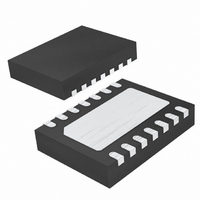LTC4263IDE-1#TRPBF Linear Technology, LTC4263IDE-1#TRPBF Datasheet - Page 18

LTC4263IDE-1#TRPBF
Manufacturer Part Number
LTC4263IDE-1#TRPBF
Description
IC IEEE 803.2AF CNTRLR 14-DFN
Manufacturer
Linear Technology
Type
Power Over Ethernet (PoE)r
Datasheet
1.LTC4263CDE-1PBF.pdf
(20 pages)
Specifications of LTC4263IDE-1#TRPBF
Applications
Power Interface Switch for Power Over Ethernet (PoE) Devices
Voltage - Supply
48V
Operating Temperature
-40°C ~ 85°C
Mounting Type
Surface Mount
Package / Case
14-DFN
Current - Supply
1mA
Interface
IEEE 802.3af
Controller Type
Power Sourcing Equipment Controller (PSE)
Lead Free Status / RoHS Status
Lead free / RoHS Compliant
Available stocks
Company
Part Number
Manufacturer
Quantity
Price
APPLICATIONS INFORMATION
LTC4263-1
If the port voltage reverses polarity and goes positive,
the OUT pin can be overstressed because this voltage is
stacked on top of the 56V supply. In this case, the transient
suppresser is used to clamp the voltage to a small positive
value to protect the LTC4263-1 and the PSE capacitor. For
this reason, it is critical that only a unidirectional TVS
be used.
Component leakages across the port can have an adverse
affect on AC disconnect and even affect DC disconnect if
the leakage becomes severe. The SMAJ58A is rated at less
than 5μA leakage at 58V and works well in this applica-
tion. There is a potential for stress induced leakage, so
suffi cient margins should be used when selecting transient
suppressors for these applications.
Capacitors
Sizing of both the C
proper operation of the LTC4263-1 AC disconnect sensing.
See the AC Disconnect section for more information. Note
that many ceramic capacitors have dramatic DC voltage
and temperature coeffi cients. Use 100V or higher rated
X7R capacitors for C
voltage dependence while also being relatively small and
inexpensive. Bypass the 48V supply with a 0.1μF , 100V
capacitor located close to the LTC4263-1. The V
also requires a 0.1μF bypass capacitor.
Fuse
While the LTC4263-1 does not require a fuse for proper
operation, some safety requirements state that the output
current must be limited to less than 2A in less than 60
seconds if any one component fails or is shorted. Since
18
DET
DET
and C
and C
PSE
PSE
capacitors is critical for
, as these have reduced
DD5
supply
the LTC4263-1 is the primary current limiter, its failure
could result in excess current to the port. To meet these
safety requirements, a fuse can be placed in the positive
leg of the port. The fuse must be large enough that it will
pass at least 675mA when derated for high temperature
but small enough that it will fuse at less than 2A at cold
temperature. This requirement can usually be satisfi ed
with a 1A fuse or PTC. Placing the fuse between the RJ-45
connector and the LTC4263-1 and its associated circuitry
provides additional protection for this circuitry. Consult
a safety requirements expert for the application specifi c
requirements.
Isolation
The IEEE 802.3af standard requires Ethernet ports to be
electrically isolated from all other conductors that are
user accessible. This includes the metal chassis, other
connectors, and the AC power line. Environment A isola-
tion is the most common and applies to wiring within a
single building serviced by a single AC power system.
For this type of application, the PSE isolation requirement
can be met with the use of a single, isolated 56V supply
powering several LTC4263-1 ports. Environment B, the
stricter isolation requirement, is for networks that cross
an AC power distribution boundary. In this case, electrical
isolation must be maintained between each port in the
PSE. The LTC4263-1 can be used to build a multi-port
Environment B PSE by powering each LTC4263-1 from
a separate, isolated 56V supply. In all PSE applications,
there should be no user accessible connections to the
LTC4263-1 other than the RJ-45 port.
42631fa














